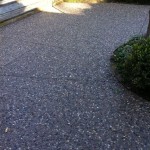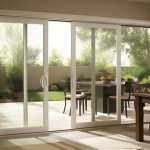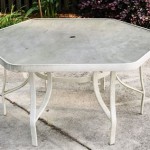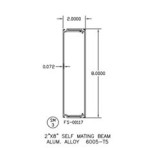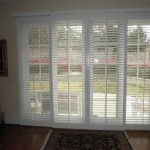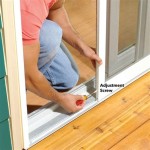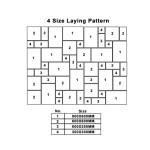Andersen 400 Series Patio Doors: A Comprehensive Overview
Andersen windows and doors are a well-respected name in the building and remodeling industry. Among their diverse product lines, the 400 Series patio doors stand out for their blend of durability, energy efficiency, and aesthetic appeal. This article delves into the features, benefits, and considerations associated with Andersen 400 Series patio doors, providing a thorough understanding for homeowners, contractors, and anyone considering this option for their home.
The Andersen 400 Series represents a mid-range offering within Andersen's portfolio, positioning itself between the more economical 200 Series and the higher-end A-Series and E-Series. This strategic placement aims to provide a balance between price and performance, making it an attractive choice for a wide range of projects and budgets. The 400 Series prioritizes vinyl-clad wood construction, which offers the warmth and visual appeal of wood on the interior surface while providing the weather resistance of vinyl on the exterior.
This combination of materials is a key factor in the popularity of the 400 Series. The wood interior can be painted or stained to match existing decor, allowing for seamless integration into the home's aesthetic. The vinyl exterior requires minimal maintenance, resisting rot, decay, and insect damage, reducing the long-term upkeep required compared to all-wood alternatives.
Andersen 400 Series patio doors are available in several configurations, including hinged (French) doors, sliding doors, and gliding doors. This variety allows homeowners to select the style that best suits their functional needs and architectural preferences. Each configuration possesses unique characteristics and advantages, contributing to the versatility of the 400 Series.
Key Point 1: Construction and Materials
The construction of Andersen 400 Series patio doors is a defining characteristic. The use of vinyl-clad wood is the cornerstone of its design. The wood used on the interior is typically pine, providing a stable and easily customizable surface. This wood is preserved with treatments to prevent rot and decay.
The exterior vinyl cladding is manufactured to withstand harsh weather conditions. It is resistant to fading, cracking, and peeling, ensuring long-term durability and aesthetic appeal. The vinyl is also low-maintenance, requiring only occasional cleaning to maintain its appearance. This reduces the need for painting or staining, saving homeowners time and money.
The core of the door panel typically consists of an insulating material, further enhancing energy efficiency. The type of insulation used can vary depending on the specific model and options selected, but it generally aims to minimize heat transfer and reduce energy consumption.
Hardware components, such as handles, locks, and hinges, are generally constructed from durable materials like brass or stainless steel, often with a protective finish to resist corrosion and wear. These components are designed to provide smooth operation and secure locking mechanisms.
Glass is obviously a very important part of the overall door system. Andersen commonly uses dual-pane glass with Low-E coatings. Low-E coatings help to reflect infrared and ultraviolet light, reducing heat gain in the summer and heat loss in the winter. Argon gas fill is often used between the panes of glass to further improve insulation. Options for impact-resistant glass are also available, depending on geographical location, for extra protection against extreme weather conditions. Glass options can also include decorative designs, such as patterned glass or simulated divided lites, offering customization to match various architectural styles.
Key Point 2: Energy Efficiency and Performance
Energy efficiency is a crucial consideration for modern windows and doors, and the Andersen 400 Series patio doors are designed to meet or exceed industry standards. Several factors contribute to their energy performance.
As mentioned, the dual-pane glass with Low-E coatings plays a significant role in minimizing heat transfer. The Low-E coatings selectively block certain wavelengths of light, reducing the amount of solar heat that enters the home in the summer and keeping heat inside during the winter. This can lead to significant energy savings and improved comfort.
The argon gas fill between the panes of glass further enhances insulation. Argon is a denser gas than air, which slows down the transfer of heat. This reduces heat loss in the winter and heat gain in the summer, improving the overall energy efficiency of the door.
The weatherstripping system is another important factor. Andersen 400 Series patio doors typically feature a robust weatherstripping system that seals the door tightly against the frame, minimizing air infiltration. This helps to prevent drafts and maintain a consistent indoor temperature, reducing energy consumption and improving comfort.
The U-factor and Solar Heat Gain Coefficient (SHGC) are two key metrics used to measure the energy performance of windows and doors. The U-factor measures the rate of heat transfer through the door, with lower numbers indicating better insulation. The SHGC measures the amount of solar heat that enters the home through the door, with lower numbers indicating less heat gain. Andersen provides U-factor and SHGC ratings for its 400 Series patio doors, allowing homeowners to compare different models and options and choose the best option for their climate and energy needs.
Proper installation is essential for maximizing the energy efficiency of any window or door. A poorly installed door can have air leaks or gaps that greatly reduce its energy performance. Andersen recommends using certified installers who are trained to properly install their products and ensure a tight seal.
Key Point 3: Styles, Options and Customization
Andersen 400 Series patio doors offer a range of styles and options to suit different architectural styles and functional needs. This versatility makes them a popular choice for both new construction and replacement projects.
Hinged patio doors, also known as French doors, swing open either inward or outward, offering a traditional aesthetic and wide opening. They are often used in pairs to create a grand entrance or to connect indoor and outdoor spaces. Hinged doors offer a classic look and can be customized with different panel configurations, hardware options, and finishes.
Sliding patio doors slide horizontally along a track, saving space and providing easy access to the outdoors. They are a popular choice for decks and patios where space is limited. Sliding doors offer a contemporary look and can be customized with different frame colors, glass options, and hardware styles.
Gliding patio doors are similar to sliding doors but feature a more advanced gliding mechanism that allows the door to slide smoothly and effortlessly. They often have a larger glass area than sliding doors, offering unobstructed views of the outdoors. Gliding doors are known for their smooth operation and contemporary design.
Andersen offers a wide variety of options for customizing 400 Series patio doors. These include frame colors, hardware finishes, glass options, and grille patterns. Homeowners can choose from a range of standard colors or opt for custom colors to match their home's exterior. Hardware options include different handle styles, lock mechanisms, and hinge finishes. Glass options include different types of glass, such as tempered glass, laminated glass, and tinted glass, as well as decorative glass designs. Grille patterns can be added to the glass to create a traditional or contemporary look.
Beyond the standard options, Andersen also offers a range of accessories to enhance the functionality and appearance of 400 Series patio doors. These include screens, blinds, shades, and security systems. Screens can be added to keep insects out while still allowing fresh air to circulate. Blinds and shades can be integrated into the door panels to provide privacy and light control. Security systems can be added to provide extra security and peace of mind.
The size and configuration of Andersen 400 Series patio doors can also be customized to fit specific openings. Andersen offers a range of standard sizes, but custom sizes are also available. This allows homeowners to perfectly fit their patio doors to existing openings or to create unique designs. Multiple door panels can be combined to create large openings, offering panoramic views and seamless transitions between indoor and outdoor spaces. Transom windows and sidelights can also be added to further customize the look and functionality of the patio doors.
In conclusion, Andersen 400 Series patio doors are a versatile and durable option for homeowners looking to enhance their home's beauty, energy efficiency, and functionality. The combination of vinyl-clad wood construction, energy-efficient features, and a wide range of styles and options makes them a popular choice for both new construction and replacement projects.

Andersen 400 Series Patio Door Northville Lumbernorthville Lumber

Andersen 71 1 4 In X 79 2in 400 Series White Left Hand Frenchwood Gliding Patio Door W Pine Int Blinds And Satin Nickel Hdw 9174156 The Home Depot

Andersen 400 Series Patio Doors Homecraft Inc Wilmington De

Andersen 60 In X 80 400 Series Frenchwood White Right Hand Sliding Patio Door Pine Interior Low E Smartsun Glass 9117172 The Home Depot

400 Series Frenchwood Hinged Patio Door Andersen Windows

Andersen 400 Series Gliding Patio Door Vinyl Exterior Wood Interior Ubrothers Construction

Andersen 400 Series Sliding Doors For A New Jersey Residence

Andersen 400 Series Patio Door Sliding French Doors Glass

400 Series Frenchwood Hinged Patio Door Andersen Windows

Andersen Windows A Series Vs 400 Comparison
Related Posts


